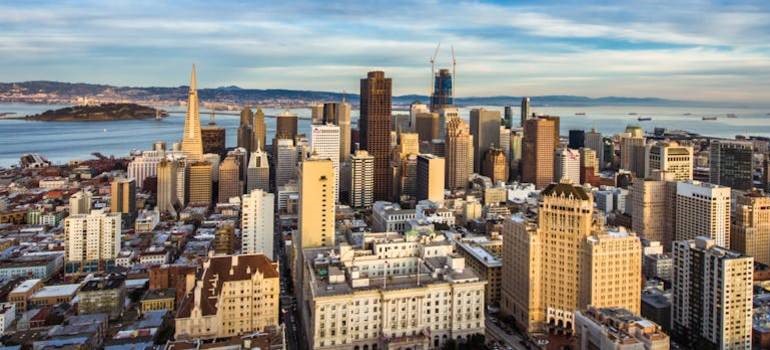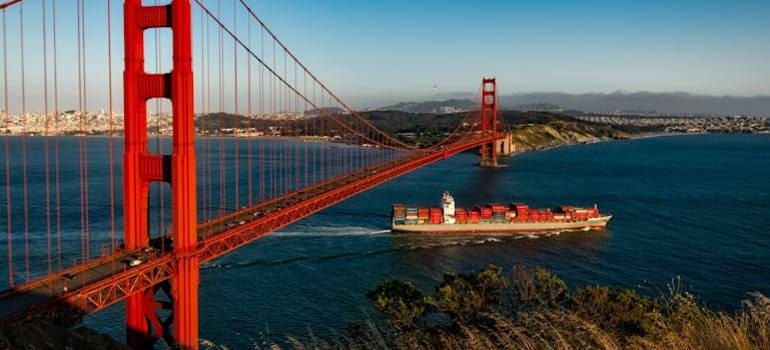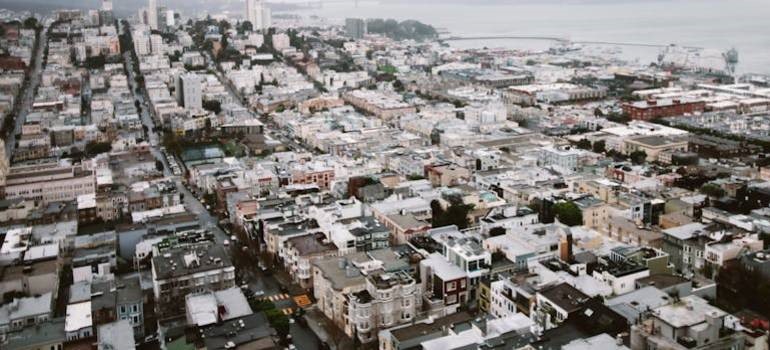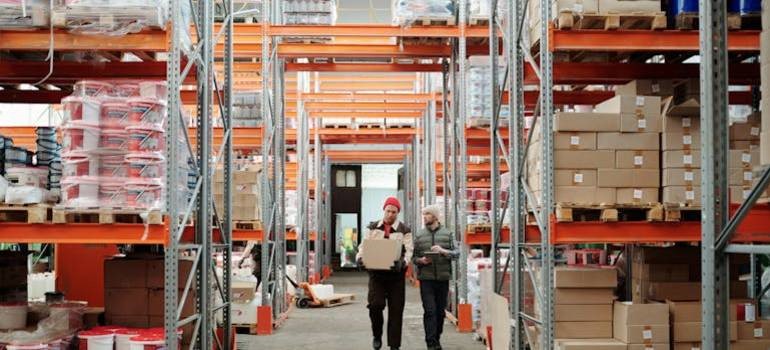More people move over the summer than during any other time of the year, and it’s not too hard to understand why. Summer relocations are often the ideal time for many people that are relocating with kids, moving out for college, or taking a vacation from work to transfer the household into a new home—and moving during any other time of the year just doesn’t make as much sense. While the timing might seem ideal, peak season moving in the Bay Area—when up to 70% of moving projects for an entire calendar year happens—comes with its own down sides. If you’re planning a residential or commercial move between Memorial Day and Labor Day of this year, now is the high time to get in touch with professional movers and ask for an estimate.
Choose your moving team early
If you’re hiring full service moving services to help you plan, organize, and execute a relocation project, make sure to find and secure your moving company early. Most moving companies are fully booked by the time peak season rolls around, which is why it’s a good idea to get in early and make your appointment far in advance.
At Upline Moving, we suggest hiring your Bay Area movers well in advance. This means starting to research moving companies in Bay Area weeks ahead, and scheduling in-home pricing estimates and free consultations beforehand. Once you’ve settled on the best company you can find, lock-in those dates quickly before other customers begin to flood in with moving service requests just before the start of the season.
Prepare for sunshine and heat waves
One of the downsides of a peak season move is the weather. While you’re not likely to experience storms or heavy rain in the summertime, especially in the Bay Area, it can get quite hot at times. This is potentially problematic if you’re moving inland or towards the Central Valley—so make sure you’re prepared. Start your moving process early in the morning to avoid exerting yourself during the hottest hours of the day. Drink plenty of water, and protect your skin with sunblock and wide hats while outside to stay cool during a warm weather Bay Area move.

Take plenty of breaks as well and offer your movers cool drinks and ice water throughout the duration of the move. Become aware of some of the signs of dehydration and heat stroke to avoid running into health issues in extremely hot weather.
Plan your budget
Just a word of advice—moving during peak season can be costlier than at other times of the year, so compare rates. Choose three or four established, reputable companies and ask for an in-home price quote and moving consultation.
The household movers will send a personalized moving coordinator to your home to evaluate your property and come up with a plan for your project. You’ll also receive a detailed breakdown of the costs—which you can then use to compare against other companies.
Factors that influence the price of peak season moving in the Bay Area
Moving during peak season in the Bay Area often leads to higher costs due to increased demand and local logistics. Between Memorial Day and Labor Day, companies charge more for both labor and transportation, especially in high-traffic or high-demand areas like San Francisco, Oakland, and San Jose.

Local moves are usually billed by the hour, while long distance movers in Bay Area follow flat-rate pricing based on distance, load size, and services. Summer rates are often higher than winter or spring due to limited availability and more complex scheduling needs. Extra costs can add up quickly depending on your location and building access. In the Bay Area, movers may include charges for:
- Parking permits or curb space reservations in cities like San Francisco or Berkeley
- Toll bridge crossings, especially over the Bay Bridge, Golden Gate, or Dumbarton
- Fuel surcharges for long-distance or uphill drives (common in hilly areas)
- Stair or elevator access in older buildings or downtown high-rises
- Long carry fees if the truck can’t park close to your front door
To get a clear idea of what you’ll pay, ask for a detailed quote with each line item listed. Comparing several quotes helps avoid unexpected charges later.
Navigate bridge tolls and city permit fees
Moving across the Bay Area often means crossing one or more toll bridges. Most movers need to factor these into the final bill, especially if the move involves major routes like I-80, I-580, or US-101. The region has several key toll bridges:
- Bay Bridge (I-80) – connects Oakland to San Francisco
- Golden Gate Bridge – links San Francisco to Marin County
- San Mateo–Hayward Bridge (CA-92) – East Bay to Peninsula
- Dumbarton Bridge (CA-84) – Fremont to Menlo Park
Tolls vary depending on time of day and vehicle size. Most range from $7 to $9, but rates are higher for trucks with extra axles. If your movers use FasTrak, they can move through toll lanes faster and may receive small savings compared to pay-by-plate systems.

Choose the cheapest moving day
Timing your move wisely can make a big difference in cost, especially during the summer rush. Movers in the Bay Area are busiest on weekends and at the beginning or end of each month. That’s when most leases end, home sales close, and families try to move without missing work. As a result, prices are often higher and availability is limited.
If possible, aim for a Tuesday, Wednesday, or Thursday move. These midweek days are less in demand, which can lower your overall cost and give you more scheduling options. Movers may also have more flexibility on these days, especially in tight neighborhoods like Mission District or downtown Oakland where timing is everything.
Moving mid-month is another way to avoid peak pricing. Try to negotiate lease start or end dates to fall between the 10th and 20th of the month. Buyers can ask for staggered closing dates to help avoid overlap or storage needs.
Avoid becoming a victim to a peak season moving scam
Beware of moving scams over the summer as well. Many unlicensed movers set up shop over the summertime to try and make money off of the high rate of customers moving during peak season. This is another reason why it’s so important to book with reputable local moving companies in Bay Area before they fill up their schedules—to avoid resorting to a last-minute company that may or may not be legitimate.
To find a reputable moving company, make sure the one you choose is BBB-accredited, offers a full-range of comprehensive moving solutions, and offers free, in-home pricing estimates. Also, check the company’s ratings on third-party sites like Angie’s List, Yelp, and Facebook to see what former customers have said about their services.
How Bay Area traffic affects summer moving logistics
Summer traffic in the Bay Area adds another layer of stress to moving day. While the weather might be on your side, the roads often aren’t. Common traffic delay spots to avoid:
- Bay Bridge (I-80) – congestion at toll plazas, especially westbound into San Francisco
- US-101 near SFO – airport traffic slows down both directions in San Mateo County
- I-880 through Oakland – frequent backups from port truck traffic and merging vehicles
- Silicon Valley (US-101 and CA-85) – commuter gridlock between Mountain View and San Jose
- Downtown SF – blocked lanes due to construction or special events
Try to schedule your move during early morning hours before 8 AM or mid-afternoon between 1–3 PM. If you live in a neighborhood with narrow streets or steep hills, your moving company might suggest using a small shuttle truck to transfer belongings from your home to a larger truck nearby.
Neighborhood load-zone strategies
Many Bay Area neighborhoods—especially older parts of San Francisco—present physical and legal challenges during a summer move. Narrow streets, steep grades, and limited curb space often make it hard for full-size moving trucks to park close to your home. In these cases, movers may use a smaller “shuttle” van to transfer your items from your door to a larger truck parked nearby.

Cities like San Francisco, Oakland, Berkeley, and Palo Alto require advance reservations for “No Parking” signs to hold space for moving trucks. These typically need to be requested at least 5 business days in advance. Expect fees between $60 to $150, depending on the city and the number of parking meters or signs involved. Fines for skipping permits can exceed $200 and may cause costly delays. Get your permits early to avoid last-minute surprises and keep your movers on schedule. Zoning issues that affect summer moves include:
- San Francisco steep street limits – trucks may not be allowed on grades above certain angles
- Metered parking restrictions – many city blocks require meter covers or hourly fees
- Permit-only residential zones – moving trucks need temporary access permission
- Truck size limitations – certain blocks restrict trucks over 26 feet in length
Renting a private driveway, if available, may cost less than curb reservations, especially for multi-day moves. Always check with your local parking office to find out what’s allowed in your neighborhood before moving day.
Real-estate timing hacks during peak season
Planning a summer move in the Bay Area often means working around tight real estate timelines. Homebuyers and renters alike face stiff competition during this busy season, and even small delays can create costly gaps between move-out and move-in dates. To avoid paying for storage or temporary housing, try to line up your real estate schedule with moving company availability early.
For renters, coordinating lease rollover periods—especially in high-demand areas like San Francisco, Mountain View, or Palo Alto—can give you extra days to move without pressure. Homebuyers should communicate with agents and sellers to negotiate flexible possession dates, which can help avoid moving on holiday weekends or during major events that impact traffic and logistics. Make sure to:
- Contact movers as soon as your close or lease date is projected
- Check for local events near your new address (e.g. Outside Lands, Golden Gate Half Marathon)
- Negotiate 2–3 extra days of access in your current or future home if possible
- Avoid June 30 and August 31—both are peak turnover days in Bay Area rentals
- Ask your realtor or leasing agent about early possession or weekend flexibility
- Lock in moving services once your real estate timing is confirmed
- Confirm with HOA or building management about move-in rules and hours
Secure short-term storage during the summer crunch
It can be challenging to find storage units in Bay Area during peak moving season. Between June and August, demand increases due to lease gaps, delayed closings, and renters waiting for new units. Units in San Francisco and surrounding cities often book up weeks in advance, especially near college campuses and dense urban areas.
If you're storing electronics, instruments, or artwork, consider a climate-controlled unit. These protect your belongings from moisture, heat, and temperature swings—common concerns during hot inland summers. Standard units may work for furniture and boxes, but don’t offer the same level of protection for sensitive items.

To save money, look into facilities in East Bay cities like Hayward or Richmond. Storage units in Hayward CA help cut living or business costs, have more space and lower rates compared to San Francisco or Palo Alto. Just be sure the location is still convenient enough for quick access.
If traditional storage units are full, ask movers about portable storage pods. These can be delivered to your home, packed at your pace, and picked up for storage or delivery later. Booking early helps secure your preferred option before summer demand peaks.
Why timing matters for peak season moving in the Bay Area
Summer in the Bay Area moves fast. Rentals turn over, roads fill early, and moving crews stay booked for weeks. Planning around all of that takes more than a truck. It takes local knowledge—of how steep that block in Noe Valley really is, or when traffic backs up past the Bay Bridge toll. Even the weather shifts from foggy mornings in Daly City to dry heat in Walnut Creek, sometimes within an hour’s drive. That’s why experience matters. People who move here often rely on professionals who already know how to navigate it all. Booking early, aiming for a mid-month date, and choosing quieter weekdays helps make it all manageable. So does working with movers who can predict any potential problems. Peak season moving in the Bay Area doesn’t have to feel rushed. With the right timing, it just works.
Tags
Subscribe to Upline Moving's Blog










